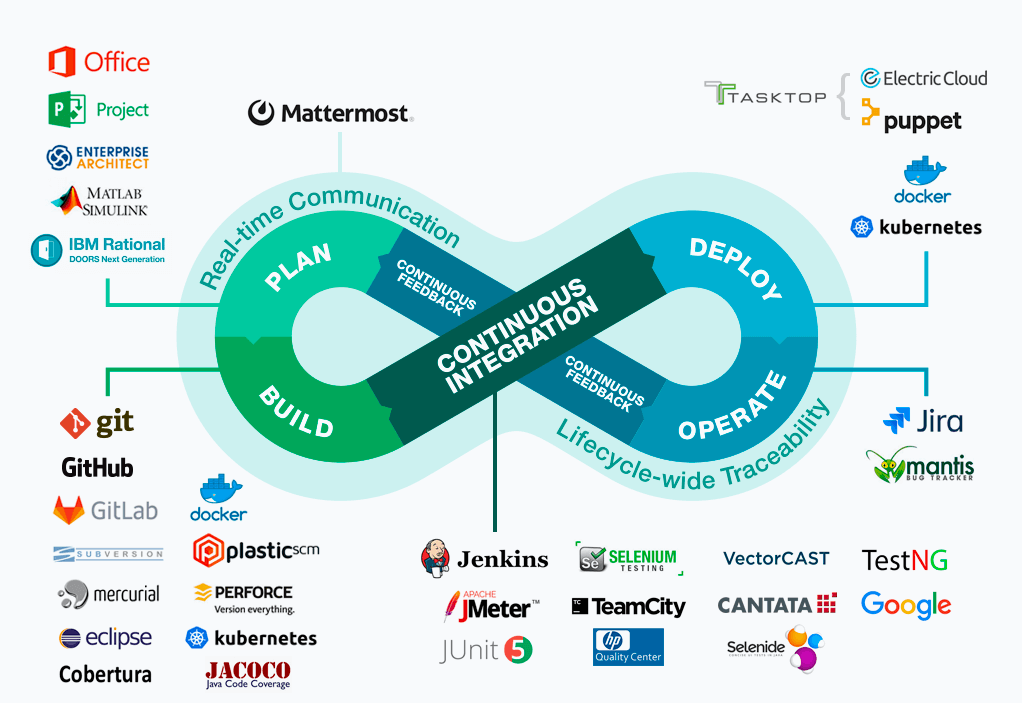Day 1: Introduction to DevOps: Bridging the Gap Between Development and Operations
 ARPIT GUPTA
ARPIT GUPTA
1. Introduction
DevOps is a set of practices, methodologies, and cultural philosophies aimed at improving collaboration and communication between software development (Dev) and IT operations (Ops) teams.
The core idea behind DevOps is to break down the barriers between development and operations, fostering a culture of collaboration, automation, and continuous improvement throughout the software development lifecycle.
Importance of DevOps in modern software development.
Faster Time to Market: DevOps practices enable organizations to deliver software updates and new features more frequently and reliably.
Improved Collaboration and Communication: DevOps fosters a culture of collaboration and communication between development, operations, and other stakeholders involved in the software delivery process.
Enhanced Quality and Reliability: DevOps practices such as continuous integration, automated testing, and infrastructure as code (IaC) help improve the quality, reliability, and stability of software systems.
Scalability and Flexibility: DevOps enables organizations to scale and adapt their software delivery pipelines to meet changing business needs and market demands.
Cost Efficiency: DevOps practices help organizations optimize resource utilization, minimize waste, and reduce operational costs.
Competitive Advantage: In today's digital economy, speed, agility, and innovation are key drivers of competitive advantage.
2. What is DevOps?
"DevOps is a collaborative approach to software development and IT operations that emphasizes communication, integration, automation, and shared responsibilities. It aims to streamline the software delivery process, enabling organizations to deliver high-quality software more rapidly and efficiently."
Evolution of DevOps:
The evolution of DevOps began in the early 2000s to address challenges in traditional software development and IT operations. Here's a snapshot:
Pre-DevOps Era (Before 2009):
Development and operations worked separately, leading to inefficiencies and lack of collaboration.
Development focused on features, while operations emphasized stability.
Emergence of Agile and Lean Practices (Early 2000s):
Agile and Lean methodologies promoted collaboration and continuous improvement.
These laid the groundwork for more efficient software development.
Birth of DevOps (Around 2009):
Coined by Patrick Debois and Andrew Clay Shafer, DevOps aimed to bridge the gap between development and operations.
It sought to break down silos, improve communication, and accelerate software delivery.
Early Adoption and Maturation (2010s):
DevOps gained momentum in the early 2010s, driving innovation and improving time to market.
Practices like continuous integration, continuous delivery, and infrastructure as code became standard.
Integration with Cloud Computing and Microservices (Mid-2010s):
Cloud computing and microservices further accelerated DevOps adoption.
Cloud platforms offered scalable infrastructure, while microservices promoted agility and resilience.
Expansion Beyond Development and Operations (Late 2010s - Present):
DevOps expanded beyond development and operations to include security, quality assurance, and business alignment.
It continues to evolve with technological advancements and changing business needs.
3. key principles of DevOps
Collaboration: Encourages teamwork and communication between development, operations, and other stakeholders.
Automation: Leverages automation to streamline processes, reduce errors, and increase efficiency.
Continuous Integration (CI): Involves frequently integrating code changes and testing them automatically.
Continuous Delivery (CD): Automates the deployment process to deliver software changes quickly and reliably.
Infrastructure as Code (IaC): Manages infrastructure through code and automation tools for consistency and scalability.
Microservices: Favors modular, independent services for agility and scalability.
Feedback Loop: Emphasizes collecting and acting upon feedback for continuous improvement and innovation.
4. DevOps Practices and Tools
DevOps practices and tools encompass a wide range of methodologies, processes, and technologies aimed at streamlining the software development lifecycle (SDLC) and promoting collaboration between development, operations, and other stakeholders. Here's an overview:
Continuous Integration (CI):
Practices: Developers integrate code changes into a shared repository frequently.
Tools: Jenkins, Travis CI, CircleCI, GitLab CI/CD.
Continuous Delivery (CD):
Practices: Automate the deployment process to deliver software changes quickly and reliably.
Tools: Spinnaker, Argo CD, AWS CodePipeline, Azure DevOps.
Infrastructure as Code (IaC):
Practices: Manage and provision infrastructure through code and automation tools.
Tools: Terraform, AWS CloudFormation, Azure Resource Manager, Ansible.
Configuration Management:
Practices: Automate the configuration and management of infrastructure components.
Tools: Ansible, Puppet, Chef, SaltStack.
Containerization:
Practices: Package applications and dependencies into lightweight, portable containers.
Tools: Docker, Podman, containerd, Kubernetes.
Orchestration:
Practices: Manage and scale containerized applications across clusters of hosts.
Tools: Kubernetes, Docker Swarm, Amazon ECS, Google Kubernetes Engine (GKE).
Monitoring and Logging:
Practices: Monitor application performance, health, and security in real-time.
Tools: Prometheus, Grafana, ELK Stack (Elasticsearch, Logstash, Kibana), Datadog.
Collaboration Platforms:
Practices: Facilitate communication and collaboration between teams.
Tools: Slack, Microsoft Teams, Mattermost, Atlassian Jira.
Version Control:
Practices: Manage and track changes to source code and configuration files.
Tools: Git (GitHub, GitLab, Bitbucket), Subversion, Mercurial.
Security:
Practices: Integrate security practices into the development and deployment pipeline.
Tools: SonarQube, Snyk, Twistlock, Aqua Security.
Testing Automation:
Practices: Automate testing processes to ensure software quality and reliability.
Tools: Selenium, JUnit, Jest, Cypress.
Deployment Automation:
Practices: Automate deployment processes to reduce manual errors and improve consistency.
Tools: Ansible, Puppet, Chef, Jenkins, Octopus Deploy.
5.Latest Trends and Future Directions
DevSecOps: Integrating security into the DevOps pipeline for continuous security testing and awareness.
GitOps: Using Git as a single source of truth for managing infrastructure and applications.
AI and Machine Learning: Leveraging AI and ML to automate tasks, optimize workflows, and improve decision-making.
Serverless Computing: Embracing serverless architectures for streamlined deployment and scalability.
Site Reliability Engineering (SRE): Adopting SRE principles for enhanced service reliability and availability.
Observability: Implementing observability practices and tools for real-time insights into system performance.
Edge Computing: Managing distributed edge environments for low-latency processing and real-time decision-making.
Conclusion
In conclusion, DevOps represents a transformative approach to software development and operations, characterized by collaboration, automation, and continuous improvement. By breaking down silos between development, operations, and other teams, DevOps fosters a culture of shared responsibility and accountability, driving efficiency, innovation, and business success.
Subscribe to my newsletter
Read articles from ARPIT GUPTA directly inside your inbox. Subscribe to the newsletter, and don't miss out.
Written by

ARPIT GUPTA
ARPIT GUPTA
Hey there! 👋 I'm Arpit Gupta, a DevOps enthusiast with a passion for all things AWS and technology. Currently embarking on a journey of learning and growth, I'm excited to share my experiences and insights into the world of cloud computing and DevOps through my blogs. 🛠️ My main focus? Harnessing the power of AWS services, refining CI/CD pipelines, and delving into the realm of infrastructure as code. Whether you're a fellow enthusiast or just curious about DevOps, let's embark on this journey together and thrive in the dynamic DevOps landscape. 🌐 Feel free to reach out to me for friendly discussions, exchanging experiences, and learning opportunities. Here's to embracing the learning process and flourishing in the ever-evolving world of AWS and DevOps technology!